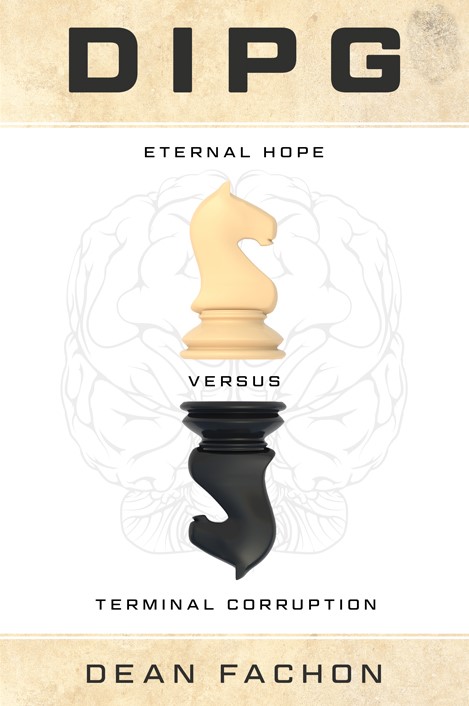Read the following excerpt from DIPG by Dean Fachon, and imagine yourself in the mind and body of a DIPG patient:
It’s “diffuse,” because the cancer spreads in and around healthy tissue; “intrinsic,” because the cancer is so intertwined it’s impossible to tease it apart from healthy tissue; “pontine,” because the cancer specifically takes up residence in the pons, the base of the brain (brain-stem) which controls many crucial bodily functions (many autonomic); and “glioma,” because the cancer invades “glial” cells, the cells which, as irony would have it, form the protective cushion which surrounds healthy neurons. As “Diffuse Intrinsic Pontine Glioma” grows, it stretches synaptic-connections and squeezes neurons, slowly degrading their ability to relay signals until those signals are completely cut off. DIPG for short.
DIPG is quick, and it’s stealthy. At first its symptoms are so imperceptible they could easily be ignored, all the more-so because DIPG’s victims are often very small children who can’t articulate what they’re feeling. Even then, a pediatrician might chalk symptoms up to sleep-loss or fighting a low-grade infection: “Fill this prescription and make sure she gets enough rest.”
Until one day the victim’s eyes cross or her movements become fumbled. Then the alarm bells go off and tests are ordered. By then, the prognosis is bleak. In the latter stages of disease, symptoms range from increasing difficulty with swallowing to being unable to take a deep breath. The progressive loss of autonomic functions and motor-control is akin to beheading the victim one nerve-strand at a time. Death by any combination of critical-system failures usually occurs within less than a year of diagnosis.
Yesterday, the U.S. Senate passed the DIPG Pediatric Brain Cancer Awareness Resolution, recognizing May 17 (today) as DIPG Pediatric Brain Cancer Awareness Day. Concurrently, my husband Dean is publishing our son’s story, DIPG: Eternal Hope vs. Terminal Corruption, to build awareness around DIPG, pediatric brain tumors and navigating the medical care with a rare disease. This unique book will place you in the shoes of a family that must manage a truly daunting diagnosis. While we had hoped to have copies available for purchase this month, a well-published book takes time, and we plan for DIPG to be available by July 2024. In the mean time, please visit our web page, dig into its supplemental content, share this blog, and help us grow awareness.


